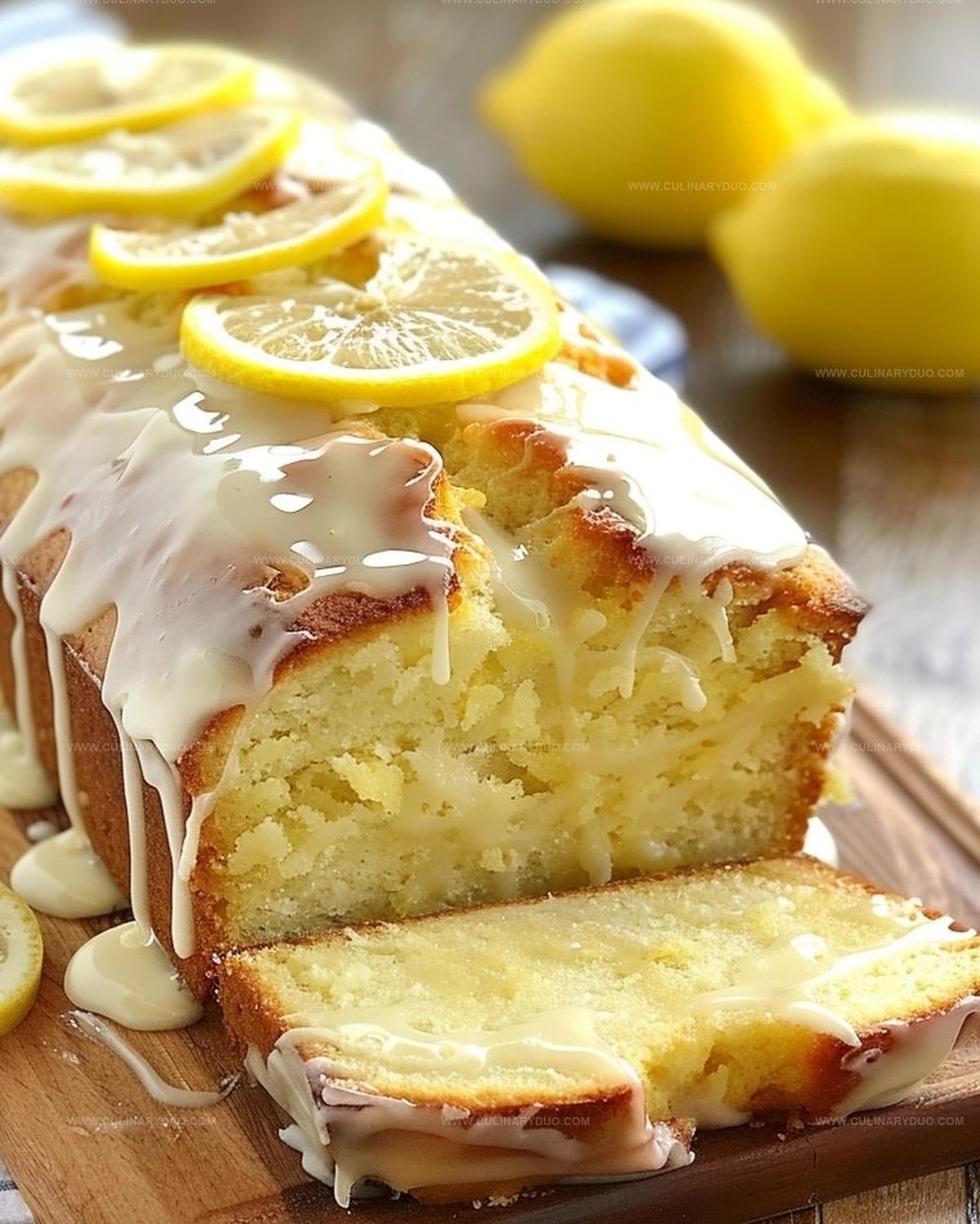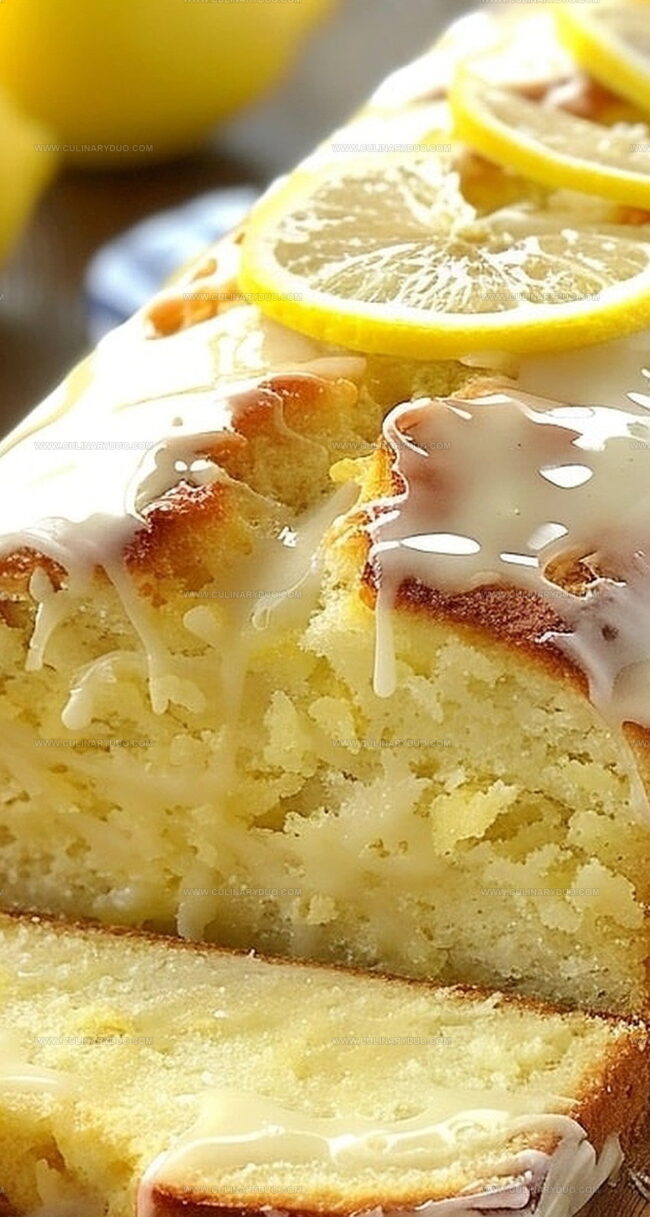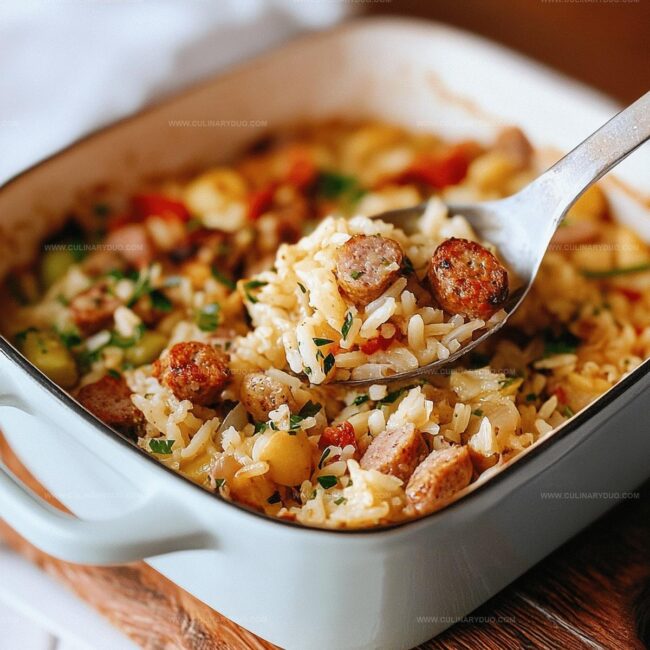The Dreamiest Lemon Glaze Cake Recipe You’ll Ever Try
Baking a moist, zesty lemon glaze cake can turn an ordinary afternoon into a delightful culinary adventure.
This simple yet irresistible recipe brings sunshine to your kitchen with its bright, tangy flavors.
Bursting with citrusy goodness, the cake promises to be a crowd-pleaser for any occasion.
The glaze adds a sparkling sweetness that perfectly complements the tender crumb.
Each slice delivers a perfect balance of tart and sweet notes that dance on your palate.
With just a few basic ingredients and minimal effort, you’ll create a dessert that looks and tastes like it came from a professional bakery.
Lemon Glaze Cake: Why It Stands Out
Lemon Glaze Cake Pantry Ingredient Checklist
Cake Base Ingredients:Wet Ingredients:Flavor Enhancers:Glaze Ingredients:Foolproof Steps For A Luscious Lemon Glaze Cake
Step 1: Prepare Baking Space
Warm up your oven to 350°F.
Lovingly coat a loaf pan with butter and dust with flour to prevent sticking.
Step 2: Mix Dry Ingredients
Grab a medium bowl and whisk together flour, baking powder, baking soda, and a pinch of salt until perfectly combined.
Step 3: Create Creamy Base
In a large bowl, beat butter and sugar until the mixture becomes light, airy, and nearly cloud-like.
Gently add eggs one by one, mixing thoroughly after each addition.
Step 4: Infuse Citrus Flavor
Stir in vibrant lemon zest, tangy lemon juice, and smooth vanilla extract.
The kitchen will start smelling incredible!
Step 5: Combine Wet and Dry Mixtures
Slowly blend dry ingredients into the wet mixture, alternating with buttermilk.
Start and end with dry ingredients to ensure a silky-smooth batter.
Step 6: Bake to Perfection
Pour the batter into the prepared pan.
Slide into the preheated oven and bake for 45-50 minutes.
The cake is ready when a toothpick comes out clean from the center.
Step 7: Cool Down
Let the cake rest in the pan for 10 minutes.
Carefully transfer to a wire rack and allow it to cool completely.
Step 8: Create Magical Glaze
Whisk together:Blend until smooth and glossy.
Step 9: Finish with Glaze
Drizzle the zesty glaze over the cooled cake.
Let it set for a few minutes before slicing and serving your citrusy masterpiece.
Chef Secrets For Easy Lemon Glaze Cake
Lemon Glaze Cake – Creative Twists & Add-Ins
Ways To Present Lemon Glaze Cake Elegantly
Best Tips For Lemon Glaze Cake Storage
FAQs
You can substitute buttermilk by adding 1 tablespoon of lemon juice or white vinegar to 1 cup of regular milk and letting it sit for 5 minutes to create a buttermilk alternative.
The mixture should look pale, fluffy, and increase in volume, which typically takes about 3-4 minutes of mixing with an electric mixer.
You can use bottled lemon juice and dried lemon zest, but fresh lemons will provide the most vibrant flavor and aroma for the cake.
Print
Heavenly Easy Lemon Glaze Cake Recipe
- Total Time: 1 hour 10 minutes
- Yield: 8 1x
Description
Lemon glaze cake brings zesty sunshine to classic dessert lovers, promising pure delight. Silky layers infused with citrus magic invite sweet indulgence, making you crave each delectable bite.
Ingredients
Main Ingredients:
- 1 cup unsalted butter (softened)
- 1 1/4 cups granulated sugar
- 3 large eggs
- 1 cup buttermilk
- 2 cups all-purpose flour
Lemon Flavoring Ingredients:
- 2 tablespoons lemon zest
- 1 tablespoon lemon juice
- 1 teaspoon vanilla extract
Dry Ingredients and Glaze:
- 1 1/2 teaspoons baking powder
- 1/2 teaspoon baking soda
- 1/2 teaspoon salt
- 1 1/2 cups powdered sugar
- 3 tablespoons lemon juice
- 1 tablespoon lemon zest
Instructions
- Prepare the oven at 350°F and prepare a loaf pan with grease and flour coating.
- Combine dry ingredients – flour, baking powder, baking soda, and salt – in a mixing bowl using a whisk.
- Use an electric mixer to cream butter and sugar until achieving a soft, airy texture.
- Incorporate eggs individually into the butter mixture, blending thoroughly after each addition.
- Infuse the batter with vibrant lemon zest, fresh lemon juice, and vanilla extract, stirring until evenly distributed.
- Alternate adding dry ingredient mixture and buttermilk to the wet ingredients, ensuring smooth integration and preventing lumps.
- Transfer the silky batter into the prepared loaf pan, spreading evenly.
- Bake for 45-50 minutes, monitoring until a testing skewer emerges clean when inserted into the cake’s center.
- Allow the cake to rest in the pan for 10 minutes, then carefully transfer to a wire cooling rack.
- Create a glossy glaze by whisking powdered sugar with fresh lemon juice and additional zest until achieving a luxurious, smooth consistency.
- Once the cake has completely cooled, elegantly drizzle the lemon glaze across the surface.
- Permit the glaze to set and solidify before slicing and serving the refreshing dessert.
Notes
- Select a fresh, ripe lemon for the most vibrant citrus flavor, ensuring the zest and juice are at their peak intensity.
- Bring all ingredients to room temperature before mixing to create a smoother, more evenly textured cake batter.
- For a gluten-free version, swap all-purpose flour with a quality gluten-free flour blend and add a teaspoon of xanthan gum for better structure.
- Enhance the cake’s moisture by brushing the warm cake with additional lemon syrup before glazing, creating an extra layer of tangy sweetness.
- Prep Time: 20 minutes
- Cook Time: 50 minutes
- Category: Desserts
- Method: Baking
- Cuisine: American
Nutrition
- Serving Size: 8
- Calories: 378 kcal
- Sugar: 44 g
- Sodium: 210 mg
- Fat: 18 g
- Saturated Fat: 11 g
- Unsaturated Fat: 6 g
- Trans Fat: 0.5 g
- Carbohydrates: 52 g
- Fiber: 1 g
- Protein: 4 g
- Cholesterol: 70 mg





Natalie Brooks
Co-Founder & Content Strategist
Expertise
Education
eCornell
Natalie brings the vibrant, plant-powered side to Culinary Duo. After earning her Plant-Based Nutrition Certificate from eCornell, she combined her love for fresh ingredients with a passion for storytelling, aiming to make healthy cooking simple and satisfying.
Her kitchen motto: good food doesn’t need a fancy label, it just needs fresh ideas and a little creativity. Outside of writing and recipe testing, Natalie’s happiest in her garden, exploring farmers’ markets, or mixing global flavors into new kitchen experiments.